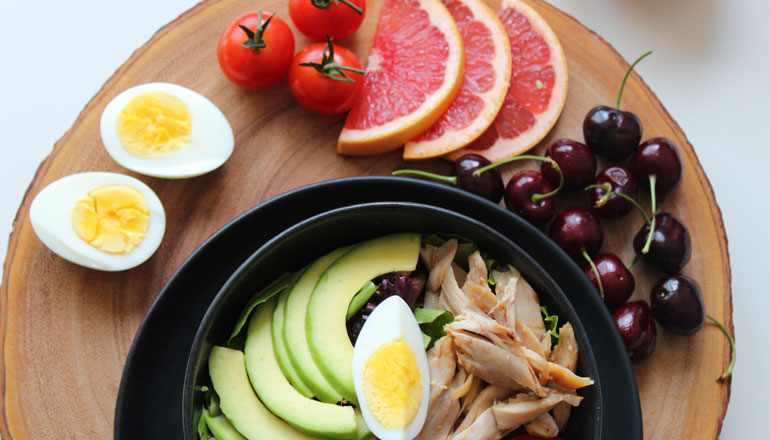
What you eat now has a big impact on how healthy you’ll be in the future.
If you’re on this website, odds are you already know this: good food choices determine general health. Likely, you also have a basic understanding of foods to be avoided and those to be selected for various purposes: controlling biomarkers, changing body composition, feeling energetic and attentive.
Your nutrition knowledge is deeper than that of the average person. Unfortunately, that also includes those closest to you—parents, partners, siblings—people you want to understand what you understand, people you want to see make different food choices, people you want to see live long and healthy lives.
You know you can help them, but you’re hesitant. You know they don’t want to debate the merits of quinoa with you, nor are they interested in the pluses and minuses of eating nightshades, and they’re definitely not up for an intervention. It’s hard to know where to start. Still, you want to start somewhere.
After some trial-and-error, I’ve had some success tackling the problem, helping the people I love improve their nutrition, and I’ve found a way to do it without coming off as preachy (or engendering too much argument). Below, my method.

The Yes/No List
To begin, I’ll suggest that I can show my subject how to lose weight and be healthier in a sustainable, simple way. I tell them they’ll slim down rapidly (and feel better every day). If they’re down for the conversation, I break out the Yes/No List.
This is the cornerstone of my method for helping loved ones with nutrition. It contains three categories: Yes, No, and Some. Each category contains a list of specific foods: those that are acceptable, those to be avoided, and those to be eaten in moderation.
I show them the List, explain the basic theory behind including (or omitting) each food, and give them a copy.
The key to the List’s efficacy: it’s very specific, including actual foods rather than categories of foods. For instance, we talk about potatoes rather than starches, ice cream and milk rather than dairy, candy and soda rather than sugar.
The rationale for this specificity is simple: I don’t want my family to have to think about compliance, deciding how to categorize any given food. This leads to confusion, frustration, and debate. Rather, I want them to spend their psychic energy on the act of eating correctly, maintaining willpower and leaving the thinking and categorizations to me. Their compliance improves, and gray areas become non-existent.
Please note that the Yes/No List below is mine alone, based on my personal experiences changing body composition and positively influencing blood panel results. It doesn’t have to match your List, nor is its inclusion here meant to create a debate on food choice. It’s simply an illustration of the concept:
| Yes | No | Some |
|---|---|---|
| Lean Meats Vegetables Fruit Eggs Fish/Shellfish Avocado Olive Oil Coconut Oil Mustard Horseradish Vinegar Water Coffee/Tea |
Bread Pasta Soda Ice Cream Milk/Cream Cheese Candy Cake/Pastries Chips/Crackers Rice Vegetable Oil Ketchup Beer/Alcohol |
Nuts Bacon/Sausage Potatoes |
As you can see, the List isn’t comprehensive. It doesn’t include every food; just those that I believe will make the biggest difference in my loved ones’ health. It also doesn’t require them to have a deep understanding of nutrition—just faith that if they follow the rules, they’ll like the results.

Clearing the Kitchen
It’s not enough just to create a Yes/No List. We also need to create an environment conducive to success.
Simply, it’s no good to tell someone what they should be eating and then leaving non-compliant foods easily accessible, in the house and begging for transgression. That’s a surefire recipe for failure, similar to asking someone to quit drinking in a bar.
To avoid this scenario, clear the kitchen. Grab a bag and go through the refrigerator and cabinets, removing foods from the No List. Give them away or throw them out, but don’t leave any “No” foods in the house. Along with a specific Yes/No List, changing the environment will greatly increase the odds of success.
The primary objection to this practice (at least from my family) is financial. How can you justify throwing out perfectly good food?
My answer is twofold: one, it’s not good food (because it’s slowly killing you), and two, the money you’ll save in the long run by avoiding health problems will far outstrip the few hundred dollars worth of food we’re taking out of the kitchen. This is usually sufficient to overcome the objection.
In addition to clearing the kitchen, you’ll want to make sure it stays clear. Create a shopping list that omits items from the No List, and make sure they don’t make it back into the kitchen. Also helpful: tell your loved ones they’ll need to shop more often, as foods on the Yes List are perishable by nature.
Making it Sustainable
No one avoids the No List forever. Eventually, cake and beer and chips will make their presence known, whether via a night out, a party, or just the gradual decay of willpower. When this happens, it’s good to give your family a plan to deal, making the best of a less-than-ideal situation.
The rule they’ll follow: “Eat it, don’t buy it.”
They can eat food from the No List when they’re out, but they can’t bring it home (and they can’t acquire more). The home environment stays clear, and the damage remains limited to a single incident. This keeps life interesting, and helps your loved ones enjoy the social aspects of food and drink without causing guilt (or turning them into anti-social shut-ins).
Still, additional adjustment is necessary after a period of full Yes/No List compliance (and the accompanying success with lifestyle change). Once your loved ones have experiential knowledge, knowing which foods cause real problems for their health and which are relatively innocuous, we’ll lessen the psychic demands of compliance, leveraging their experience to make things more sustainable. We’ll loosen the handcuffs.
To accomplish this, I use the Sometimes/Never List. It supplements the Yes/No List, keeping the most pernicious foodstuffs forever inaccessible while making occasional allowances for the sake of sustainability. Mine looks like this, based on personal experience:
| Sometimes | Never |
|---|---|
| Bread Pasta Cheese Beer/Alcohol Rice Chips/Crackers |
Vegetable Oil Ice Cream Milk/Cream Candy Soda |
The Sometimes items are those that don’t seem to affect my health (if consumed in moderation), while the Never items have an observable and immediate negative effect on my energy, appearance, or performance, regardless of quantity.
I apply the “Eat it, don’t buy it” protocol to the Sometimes List, and never consume the Never List items.
This next-level list doesn’t replace the Yes/No list. Rather, it’s used in conjunction, a further refinement of how to treat certain items under certain conditions. It makes healthy food choices more realistic, while preserving the specific and actionable nature of the Yes/No List.
Changing your loved one’s eating habits is not easy. Your job is to make starting easier and then make the change sustainable. This is a four-step process:
- The Yes/No List
- Clearing the Kitchen
- The “Eat it, Don’t Buy It” Rule
- The Sometimes/Never List
Combining these four steps, you’ll find that your parents, partners, and other relatives will be more amenable to change, enabled by specific direction, a lack of sermonizing, and a gradual loosening of the rules (once lifestyle change is cemented).
I’ve implemented variations of the process with my parents as well as my wife’s parents, and seen significant weight loss and health marker improvements from both. Give it a shot with your loved ones, and watch your knowledge percolate health and wellness into your family.
Questions on the process? Post to comments, and we’ll do our best to help.



































